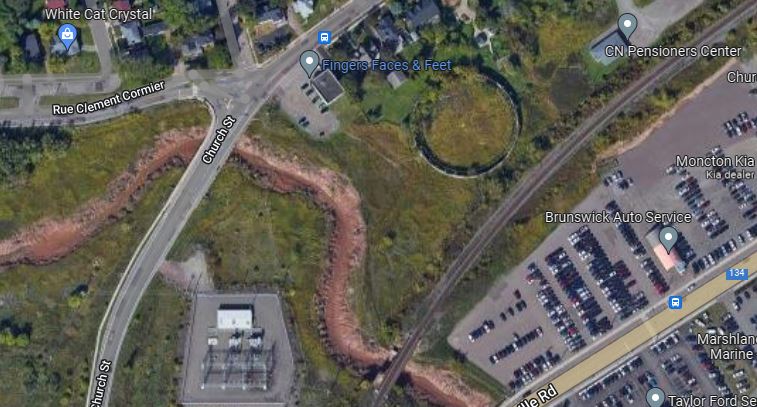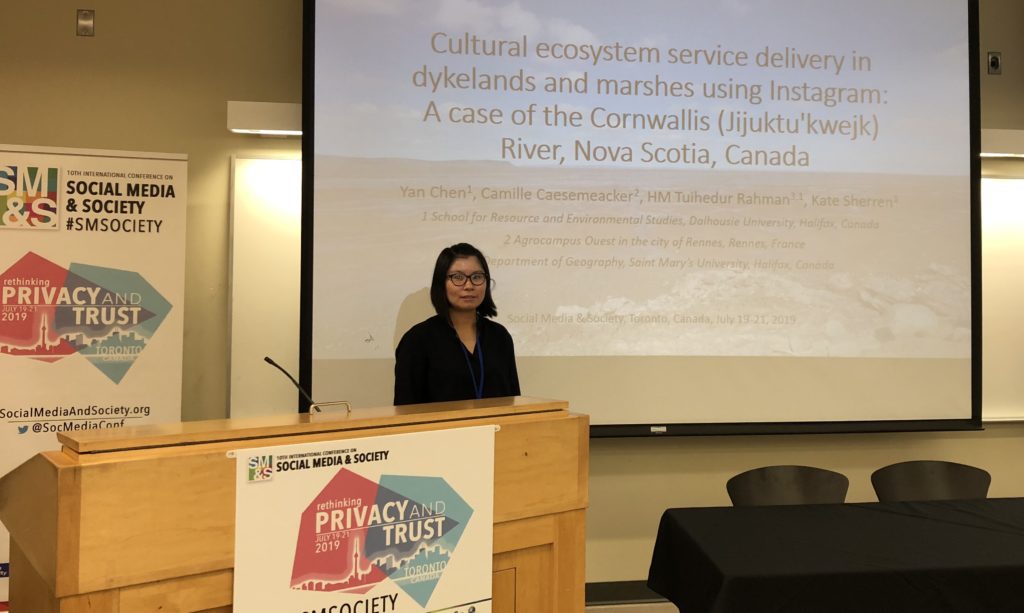
Wetland meadows hide the river view on the riverside trail along the Petitcodiac at Dieppe, near Moncton, NB.
I had a forced stay in Moncton last week. I do hate to say it that way, but for some reason I’ve never spent any real time in Moncton despite growing up in NB, beyond volleyball tournaments back in high school. This time it was for the hospital, not for me but for a family member, for whom I was also isolating so avoiding indoor locations. I made two notable discoveries. First, the delightful extended trails along the Petitcodiac River. The tidal river that divides Moncton and Riverview winds amidst extensive wetlands that were covered with a tapestry of plants, and a riverside trail allows you to walk or bike quite far along it.
Second, and more surprising, was the derelict building I found. I’ve been to an engine roundhouse before, at Junee: it is basically a big circular building to store and switch out train engines. So when I peered between two residential buildings and saw a massive curved wall, roundhouse was the first thing I thought. But it seemed impossible that such a place would persist in suburban backyards. Google Maps confirmed the shape (see below): a perfect circle, with a few big doors, perhaps to allow the engines in and out. The final hint was the adjacent railway and CN Pensioner’s Center. Yet if you click on it in Google Maps, it is labelled as the “Sunny Brae Rink (temporarily closed)”, which is remarkably the case. As you can see to the right, the closure is anything but temporary, however. I am achingly jealous of the kids who get to grow up with this crumbling Coliseum in their backyards. I had to make do with playing in the foundations of old potato barns along the Mactaquac headpond when I was a kid, though this is likely the best way to visit the rink. Thanks to the burghers of Moncton for letting this fall apart in situ since its 1922-1928 period of activity.

The derelict roundhouse is clearly visible on Google Maps, adjacent the railway and the CN Pensioner’s Center.





